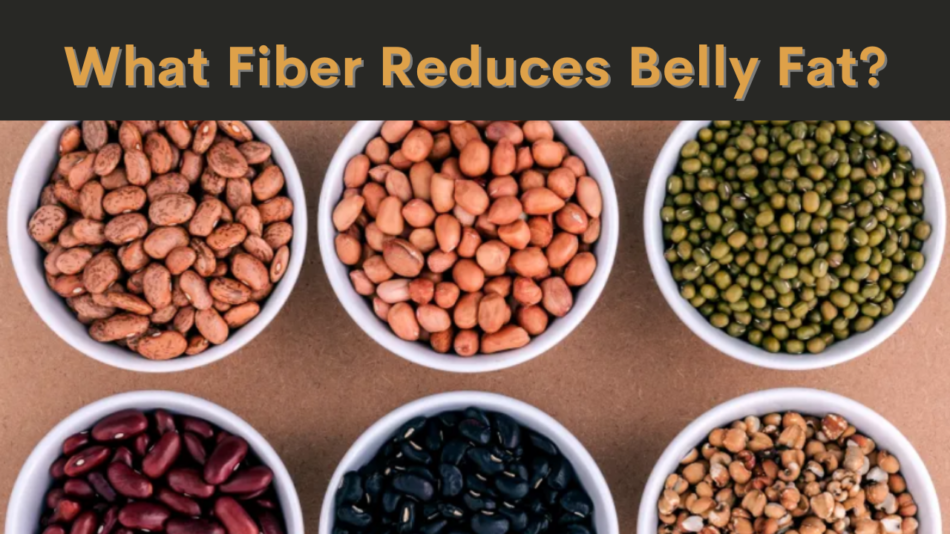
The quest to reduce belly fat is more than just a cosmetic concern; it’s about improving health and reducing the risk of chronic diseases. Among various dietary strategies, increasing fiber intake has been shown to play a significant role. This article delves into “What Fiber Reduces Belly Fat?” by exploring how certain types of dietary fiber can help you achieve a leaner waistline and a healthier body.
What fiber reduces belly fat? Foods rich in soluble fiber, such as oats, legumes, avocados, and flaxseeds, can help decrease overall calorie intake and reduce visceral fat accumulation. Incorporating these foods into your diet is a practical strategy for targeting belly fat and improving metabolic health. Soluble fiber is effective in reducing belly fat because it absorbs water and forms a gel-like substance during digestion, slowing down the process and promoting a feeling of fullness.
Understanding Belly Fat and Its Health Risks
Before identifying which fibers can combat belly fat, it’s crucial to understand the types of belly fat: subcutaneous and visceral. Visceral fat, located deep within the abdominal cavity, poses significant health risks, including heart disease, diabetes, and certain cancers. Reducing visceral fat is paramount for improving health outcomes.
The Role of Fiber in Weight Management
Dietary fiber is categorized into soluble and insoluble types, both of which are essential for digestive health. Soluble fiber, in particular, has been linked to weight loss and the reduction of belly fat. It absorbs water and forms a gel-like substance in the gut, which slows digestion and promotes a feeling of fullness.
Soluble Fiber: The Key to Reducing Belly Fat
Research has shown that soluble fiber can effectively target belly fat by enhancing satiety, reducing appetite, and influencing metabolic processes. Foods high in soluble fiber include oats, legumes, avocados, and certain fruits and vegetables.
How Soluble Fiber Works to Reduce Belly Fat
Soluble fiber impacts belly fat reduction through several mechanisms:
- Enhances feelings of fullness: By slowing down digestion, soluble fiber helps you feel full for longer, reducing overall calorie intake.
- Lowers fat absorption: It can reduce the amount of fat absorbed from the diet, decreasing fat accumulation in the belly.
- Improves gut health: A healthy gut microbiota, influenced by a high-fiber diet, plays a role in weight management and fat reduction.
Top Soluble Fiber Foods to Combat Belly Fat
| Food Source | Benefits of Belly Fat Reduction | Fiber Content (per 100g) | Slows digestion, promotes fullness, and helps lower cholesterol. |
|---|---|---|---|
| Oats | Soluble | 10.6g | It increases the feeling of fullness, and aids in lowering visceral fat. |
| Legumes (e.g., lentils, beans) | Soluble | 7.8g (lentils) | It absorbs water to form a gel and slows glucose release into the bloodstream. |
| Avocados | Soluble | 6.7g | It increases the feeling of fullness and aids in lowering visceral fat. |
| Flaxseeds | Soluble | 27.3g | High in water content, promotes satiety, and aids in stool softening. |
| Apples | Soluble | 2.4g | Promotes fullness, reduces calorie intake, high in antioxidants. |
| Brussels Sprouts | Soluble | 2.6g | It increases the feeling of fullness and aids in lowering visceral fat. |
| Pears | Soluble | 3.1g | Reduces calorie absorption, and enhances gut microbiota health. |
| Black Beans | Soluble | 8.7g | Provides steady energy release and aids in satiety and digestion. |
| Sweet Potatoes | Soluble | 3.0g | Highly effective in forming gel, enhancing fullness, and regulating blood sugar. |
| Psyllium Husk | Soluble | 80g (fiber content varies) | Highly effective in forming a gel, enhancing fullness, and regulating blood sugar. |
Each of these foods not only contributes to reducing belly fat but also supports overall health with their nutrient-rich profiles.
Incorporating High-Fiber Foods into Your Diet
Strategies for increasing soluble fiber intake include starting the day with a fiber-rich breakfast, incorporating legumes into meals, and choosing whole fruits over juice.
FAQs
How much fiber should I consume daily to reduce belly fat?
Aim for at least 25–30 grams of total fiber per day, with an emphasis on soluble fiber sources.
Can fiber supplements be as effective as whole foods for reducing belly fat?
While supplements can aid in fiber intake, whole foods provide additional nutrients and are generally recommended for health benefits.
Are there any side effects to increasing fiber intake?
Rapidly increasing fiber can cause digestive discomfort. It’s best to gradually increase your intake and drink plenty of water.
Conclusion
In the battle against belly fat, not all fibers are created equal. Soluble fiber stands out as a powerful ally, capable of slowing digestion, enhancing satiety, and ultimately contributing to the reduction of visceral fat. By focusing on “What Fiber Reduces Belly Fat?” and incorporating these foods into your diet, you’re taking a significant step toward not only slimming your waistline but also boosting your overall health.